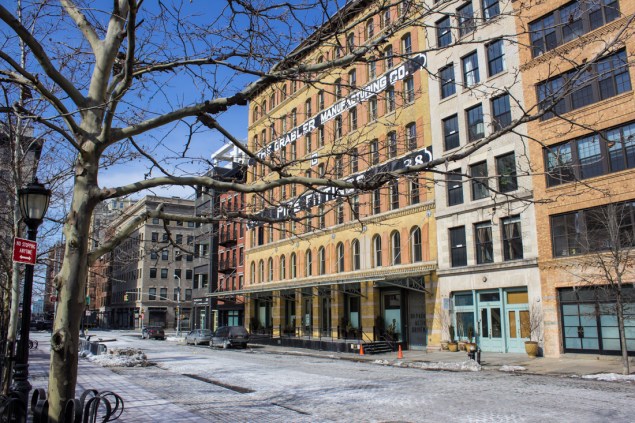
The handsome, cobblestoned streets of Tribeca were swathed in fog on a recent Sunday morning, lending the neighborhood an even more muted air than usual. It was a scene straight out of Atget, save for the soft footfalls of the occasional jogger and the faint jangle of dog leashes, attached to well-bred specimens out for their late-morning walks in understated jackets of hunter green and navy.
But inside Bubby’s, the neighborhood favorite for brunch, the bar was packed four-deep with casually clad Wall Street types celebrating the noon opening of the bar, and young families crowded the dining room, tucking into abundant platters of meticulously sourced, American classics. Preternaturally good-looking couples sipped coffee and women in post-workout Lululemon pushed around plates of salad. Routinely described as one of the neighborhood’s more affordable dining options, it is indicative of Tribeca’s rather daunting affluence that an egg-and-toast breakfast at Bubby’s costs $19.
Even within the rarefied precincts of Manhattan, Tribeca is an outlier. By the metric that is increasingly ascendant in New York—how much people are willing to spend—Tribeca is the most desirable neighborhood in the city, the place where the kind of people who can afford to live anywhere prefer to be.
Not only has Tribeca taken home the title of most expensive neighborhood in the city by average residential sales price the last few years, said appraiser Jonathan Miller of Miller Samuel, but the Tribeca/Soho area has occupied the top slot since he started tracking the neighborhood in 1987 (statistics for the two adjacent neighborhoods are mixed because back then, the number of residential units in Tribeca was so small as to be insignificant).
In 2014, the average sales price in Tribeca/Soho was $3.5 million, far above the $2.23 million average on the tony Upper East Side, and more than twice the Manhattan average of $1.71 million, according to Miller Samuel. Moreover, the neighborhood’s continued dominance seems inevitable, with the ongoing flurry of loft conversions and developments rising along its eastern flank, among them the ultra high-end, Herzog and de Meuron-designed 56 Leonard, which did $1 billion in sales this past year and briefly held the Downtown record after its duplex penthouse sold for $47 million.
Tribeca has its charms, and quite obvious ones at that, but it is also something of an oddity—a neighborhood whose quiet sidewalks would seem to offer little in the way of Jane Jacobs street life that Village denizens like to rave about. It doesn’t possess the bucolic allure of Upper Fifth Avenue or Central Park West, nor is it the consumer fantasia of 57th Street. Unlike Gramercy Park or the Upper East Side, which have been favorites of the city’s prosperous for at least a hundred years, Tribeca had virtually no residents 50 years ago, prosperous or otherwise. Furthermore, the cast-iron buildings that comprise its most iconic housing stock have often lacked the spas, car courts and lap pools that sheltered luxury buyers have come to expect; many even lack very basic amenities such as a doorman, gym or shared roof deck. The views can be lovely but they’re not aerial and for a considerable chunk of the neighborhood, particularly the rapidly rising corridor on the West Side, the subway is a serious schlep.
So how did Tribeca become the unrivaled titan of Manhattan real estate, the preferred seat of masters of the universe, creative kingpins and celebrities like Jay Z and Beyoncé, Taylor Swift, Meryl Streep and Russell Simmons?
***
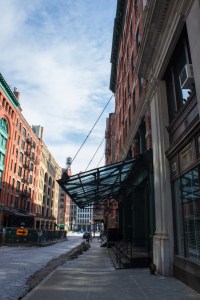
“I love it and I can’t imagine living anywhere else. It’s extremely family-friendly,” enthused April Williamson, whom we met in the Shinola store, that leather-scented temple to American craftsmanship on Franklin. Nearby, two men outfitted in perfect accordance with the store’s rugged-chic look examined its vintage-style bicycles that, though beautiful, at $1,950 to $2,950, seemed a serious risk on the bike theft-prone streets of New York.
Ms. Williamson, who moved to Tribeca from Jersey City five years ago so that her husband, who works in advertising, could be closer to his job, said that she’s so enamored of the neighborhood she’s made peace with having traded a spacious carriage house for a two-bedroom.
She enumerated its many charms: Great family-friendly restaurants like Landmarc, Bubby’s and Odeon where they could take their daughters, ages 2 and 4; the park on Greenwich “where we practically live in warmer months”; really good shopping, from Balloon Saloon to Steve Alan Home. Even the nail salons are nicer in Tribeca—she and many of the other mothers she knows are big fans of a place near Locanda Verde that uses all organic products.
Taryn Toomey, the former fashion-executive-turned-fitness-guru who founded “the class,” a near-impossible-to-get-into 75-minute workout that blends moves borrowed from South American shamanic traditions with music and cathartic screaming, described passing people she knows every other block.
“It feels like a little neighborhood, but then it’s also quite big—there is such a variety of places to go and things to do. I don’t know if I’d ever want to live anywhere else,” said Ms. Toomey, who moved to Tribeca 12 years ago.
Even the clerk in the Shinola store, himself a resident of Bushwick (no one who worked at the store lived in the neighborhood, he told us), said that he’d specifically looked for retail jobs in Tribeca because of his positive experiences working at a nearby American Apparel store. “It’s where nice people come to live,” he said.
***
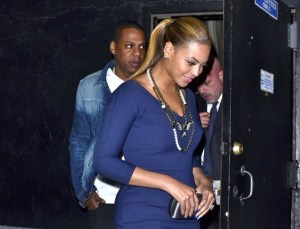
There was an overlap of three things: the original pioneering artists and the people in Independence Plaza [a former Mitchell-Lama rental built in 1975] created a community that got the public schools in place, then there was the creation of Washington Market Park, and suddenly you have a new and successful middle-class neighborhood that’s walkable to the Financial District,” surmised Lynn Ellsworth, the chair of historic preservation society Tribeca Trust. “Whammo, you have a recipe for gentrification.”
Ms. Ellsworth was initially hesitant to speak with us, citing “the usual snarky take the press has on the neighborhood.” Which, we granted, was fair, given a certain press tendency to depict the neighborhood as an entitled enclave clad exclusively in Canada Goose (GOOS), the high-end winter apparel company whose fur-trimmed parkas retail for upwards of $800. Indeed, on recent trips to the neighborhood we found that Canada Goose parkas only accounted for about a third of all winter coats—one of the nannies with whom we spoke was wearing one—but that’s a saturation level below that of the posh Toronto neighborhoods last winter that may well be ground zero for the trend.
An economist by training, Ms. Ellsworth said that when she and her husband, now a professor at Columbia, first moved to Tribeca in 1994, they were seen as somewhat anathema to the neighborhood.
“We were considered yuppie newcomers, not the artistic cool people,” she recalled. “We were academics, and that was not so much what people were into.”
They certainly weren’t the only ones: That same year, John F. Kennedy Jr. bought a loft on North Moore Street. Two years later, he brought back his bride and an inexhaustible paparazzi presence, with Ms. Bessette helping to secure the neighborhood’s reputation as both glamorous and understated.
Compared to the people moving in now, Ms. Ellsworth and her husband are bohemians, like other residents of their co-op on Duane and Hudson, which has, unlike so many of others, remained a middle-class refuge because its apartments are smaller and the building’s layout precludes combining units to advantageous effect.
Despite the influx of money, Ms. Ellsworth described Tribeca’s vibe as completely different from that of the Upper East Side, where her daughter attends private school. In Tribeca, most people are happy to put their kids in P.S. 234 (arguably the most sought-after public school in the city), which dampens the pre-school competitive frenzy. Tribecans are also community-minded—“It’s small enough that you might well see people you know when you run out to the hardware store.”
That is, at least, if you’re among the residents who still run out to the hardware store.
As for the über-wealthy, Ms. Ellsworth said that their presence is more inferred than felt. “I am aware that Richard Parsons lives in a penthouse across the street from me—my husband says he saw his limo once, but the celebrities, except for Harvey Keitel, you don’t see them much. I think they live somewhere else a lot of the time.”
But those celebrities, vestigial though their presence may be, have anointed Tribeca a preferred stomping ground. Perhaps it is the neighborhood’s ability to make new money seem crisp rather than gauche. Or perhaps it is because Tribeca is neither flashy—it’s the kind of place where those with wealth take pains to conceal it—nor quaint, nor like so many newly moneyed neighborhoods in Brooklyn, precious. Its streets may be cobblestoned, but they are wide, built to accommodate loading docks, delivery trucks or, if need be, chauffeured Range Rovers.
“Tribeca doesn’t have the feel of Upper East Side-type money, it’s quieter,“ said a local wellness teacher. “It’s Downtown casual, like slouchy leather pants—The Row does a really cool slouchy leather pant, it’s really expensive but that’s what I see a lot of people wearing—with a fitted top and a cross body bag. And Isabel Marant booties.”
“Well, a lot of Isabel Marant everything,” she added, laughing.
Lisa Demogenes, an artist and yoga instructor who teaches in the neighborhood and whose son goes to school there recalled complimenting a woman on her Irish fisherman-style sweater. “It was cheap—$250,” the woman responded. “Where could you possibly get a sweater for $250 this day and age,” Ms. Demogenes recounted, rolling her eyes. “What’s surprising is how normal a very expensive lifestyle is here.”
“And everyone here has the same coat,” she added, clutching this reporter’s arm in the place where the Canada Goose would logo appear. “All you do is see the patch!”
It’s no surprise that Tribeca’s unique aesthetics would appeal to such a crowd. The 19th century mercantile architecture that dominates the neighborhood is both austerely beautiful and uniquely well suited to the luxurious, massive lofts favored by its inhabitants.
Quite simply, people want space, and Tribeca offers the most impressive expanses in the city. Apartments in Tribeca/Soho measure, on average, 2,127 square feet, as opposed to 1,608 square feet on the Upper East Side, according to Miller Samuel. “It is such a unique housing stock and it ended up carving out such an unusual niche,” Mr. Miller said.
He cautioned, however, that Tribeca’s statistical bravado is due to the massive physical spaces offered by its housing stock, given that it’s almost all been converted into residential or built since the early 1980s—you’d be hard-pressed to find a 300-square-foot studio here.
Soho shares many of the same characteristics, of course, but in sales reports that separate them, Tribeca is often the victor, a boost that Mr. Miller said might be attributed to two things: Tribeca never had Artist-in-Residence requirements, so it was easier for newcomers to stake a claim to its housing stock, accelerating the cycle of gentrification. Second, whereas Soho is a more contained, heavily landmarked neighborhood where it’s been difficult to build, Tribeca’s western half has seen a good deal of new construction and conversion, which helps generate higher averages than a resale-dominated market.
In both neighborhoods, having such a high percentage of very upscale properties often has a self-perpetuating effect: “The value of an apartment is affected by what surrounds you,” Mr. Miller said. “If you have the exact same penthouse and one sits above studios and one-bedrooms and the other sits above three- and four-bedrooms, guess what? In the loft district it’s the same kind of principle.”
***
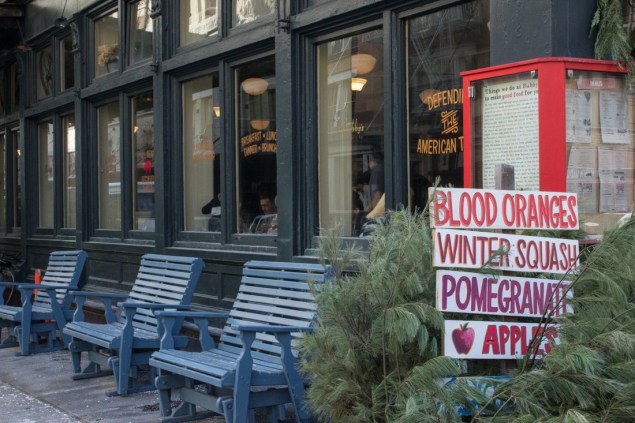
“I think Tribeca went straight from getting emptied out to people with money,” said Lynn Wagenknecht, who co-founded the Odeon with Keith and Brian McNally and later bought them out.
The Odeon’s building originally housed a cafeteria that catered to Tribeca warehouse and factory workers, but as manufacturers departed for New Jersey or the outer boroughs, it looked for someone to take over the lease. In 1980, when Odeon opened and quickly became the Downtown restaurant, “The neighborhood was completely empty… very quiet and dark. You couldn’t even tell if people were living in the buildings.”
Tribeca had virtually no residential buildings then, and even as artists started to move in, they mostly lived illegally in commercial spaces, taking care to cover up their windows at night lest the light leaking out give them away. But by 1983, The New York Times was reporting that “soaring real-estate values have limited Tribeca to higher income tenants” who “shop in gourmet food stores and brunch in restaurants with names like the Acute.”
Residents who just a few years earlier had lugged their garbage to the corner—no city sanitation—and drank their coffee black for lack of grocery stores, were by then enjoying thrice-weekly garbage pick-up and a new Food Emporium. The shift happened so fast that Tribeca never really had the chance to become a true artists’ district, something that may never have happened anyway given that the lack of density and foot traffic discouraging galleries—a misfortune that ended up saving Tribeca from becoming a simulacrum of its former self like Soho.
And Tribeca, though desolate, was never very dangerous. All-night deliveries, as well as distance from the city’s rougher districts, kept more menacing elements at bay. “It had to be one of the safest neighborhoods in New York,” wrote artist John Willenbecher, who moved to the neighborhood in 1970, in a reminiscence published in The Tribeca Citizen. “Muggings? There was no one to mug!”
Still, the lack of residential precedent meant that things took some time to cohere. Ms. Wagenknecht, who had her first child in 1983, remembers there being “nothing for children in the neighborhood.”
By 1989, it was a different story. In fact, a young couple dining at her restaurant, which had long since been declared the height of Downtown chic, made a cameo in another Times story, notable for the incongruity of their “too-cool-to-cope” demeanor (black on black, asymmetrical hairstyles, talk of esthetic hegemony) and their 6-month-old baby “gumming the tablecloth.”
Tribeca was and still is a place where the too-cool-to-cope can raise children without fear of being a fogey. It remains a neighborhood that eschews the matronly. Its oldest pool of residents is largely composed of pioneering artists and the more recently arrived over-60 set, who have marshaled their money to stake out a hip second act, their silver hair offset by leather jackets and au courant eyeglasses and reservations at Bâtard or Kutsher’s. The middle-aged cohort includes architects, designers and academics like Ms. Ellsworth, who moved in at the right time. Altogether, a class of “elders” seems to have inoculated against dowdiness, at least until the more recently arrived Wall Street contingent gets older.
“It just works,” said Leonard Steinberg, the Compass broker who built his career on selling Downtown lofts. “The new parks, the schools, the large homes, the fact that they’re condos rather than co-ops, the restaurants, the pretty boutiques, Soul Cycle, the juice bars—all the things that make life comfortable.”
Even with one of the highest per-family incomes in the city and one of the youngest demographics of all the exclusive areas, Tribeca is “not exclusive, it’s really inclusive; it’s a community,” said Nathan Berman, the developer of 443 Greenwich, a former bookbindery-turned-high-end condos.
Mr. Berman noted that the neighborhood’s understated ethos even extends to its retail, which is gentler, quieter,” a different type of ambiance.” In Tribeca, one might browse French minimalist fashion at La Garçonne in relative peace or enjoy a contemplative moment taking in Matthew Bernson’s shoe workshop, chatting up a shopgirl about the vintage Persols without having to beat back a pack of tourists.
***
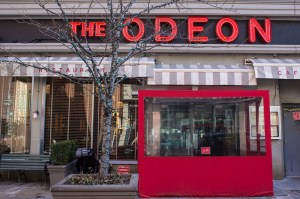
Tribeca is obviously in the city, but in many ways, it does not feel of the city. “In the past, it almost seemed out of the main loop of Manhattan and even now, though it’s more in the loop, in still feels farther out,” said Ms. Wagenknecht. “You don’t feel the same city beating down on you.”
In many respects, Tribeca is a neighborhood that seems able to have it both, or rather all, ways, whose slight inconveniences only seem to make it more desirable to a certain type of buyer. It is the kind of neighborhood that manages to be hip without veering into the raucousness of happening. The kind of neighborhood that continues to imply creativity without being too specific about it. The kind of neighborhood where one can live very comfortably without sacrificing one’s cool.
Which is not unlike the way that SNL creator Lorne Michaels once described the Odeon, as a place where everyone felt comfortable, because “it had sophistication and it had French fries.”
But not even the Odeon, which used to stay open until 4 a.m., is immune to Tribeca’s demographic shifts. It now closes at midnight or 1 a.m., a change that Ms. Wagenknecht attributed to residents having more traditional work lives and a level of wealth that means both keeping more homes and busier travel schedules. She described many of the people in the new buildings as being “kind of like royalty, they don’t support the shoe shop or the corner deli… Not that they do it consciously, they’re just operating on a different level. It’s become kind of untouchable.”
Tribeca may seem apart from the city, but in a lot of ways, it’s a more elegant reflection of the same changes that are happening in other neighborhoods around the city. And those changes aren’t likely to slow down anytime soon. As Mr. Steinberg put it, “There’s only one certainty about Tribeca’s future—it’s going to get much more expensive.”

